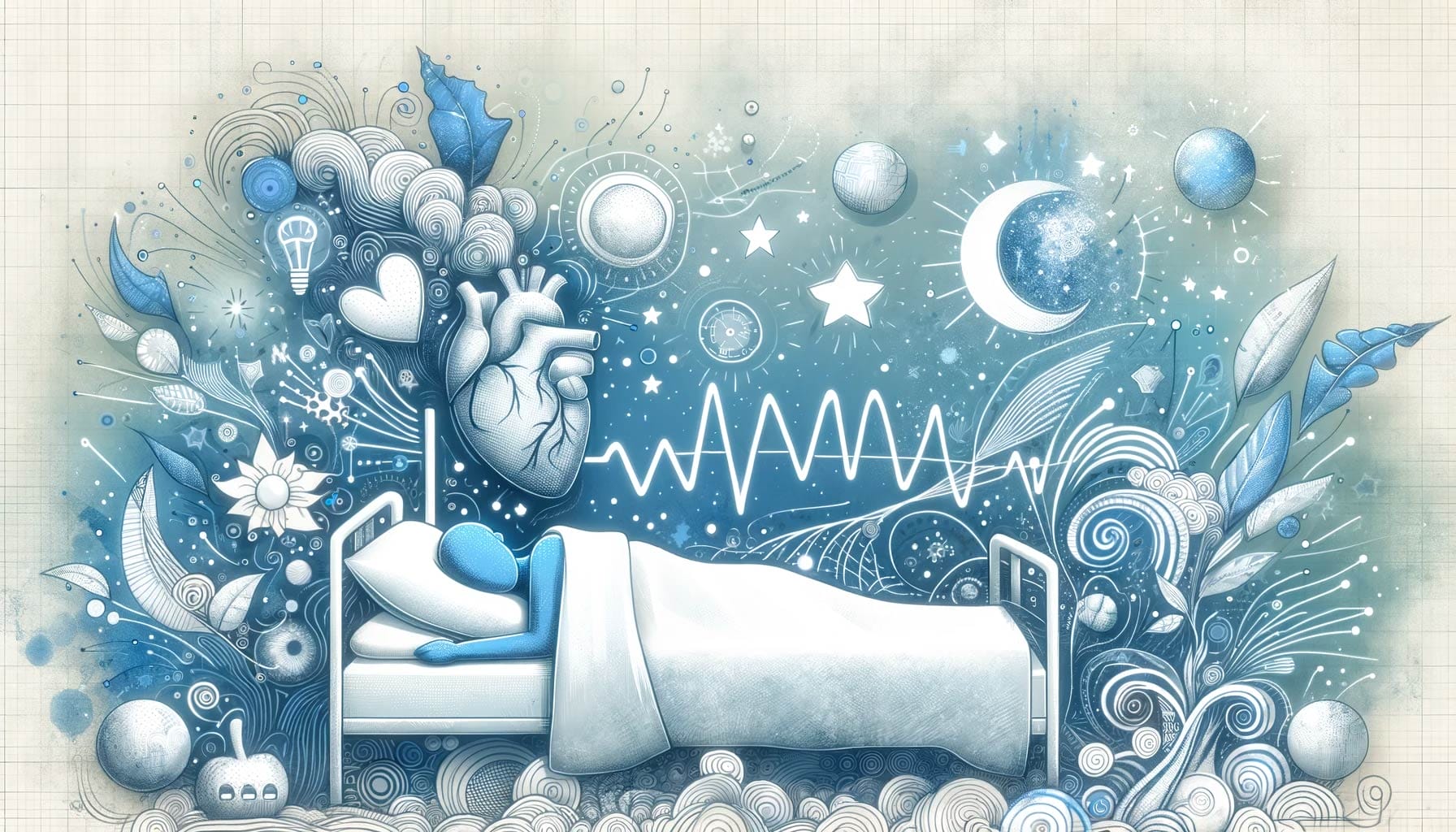The Crucial Link Between HRV and Sleep Quality
Heart Rate Variability (HRV) has become an invaluable tool in sleep research, offering insights into the intricate relationship between sleep quality and overall health. This deep dive explores how HRV, a reflection of the autonomic nervous system’s activity, is crucial in understanding the dynamics of sleep and its broader implications for wellness.
“Heart rate variability serves as a night-time narrator, telling tales of our sleep’s depth and quality, and guiding us towards healthier slumber.”
Sleep quality is a vital component of health, impacting everything from cognitive function to metabolic health. HRV during sleep, by revealing the balance between sympathetic and parasympathetic activity, provides a unique lens through which sleep quality can be assessed. High HRV during sleep generally indicates effective rest and recovery, while lower HRV may point to disturbed sleep or inadequate recuperation.
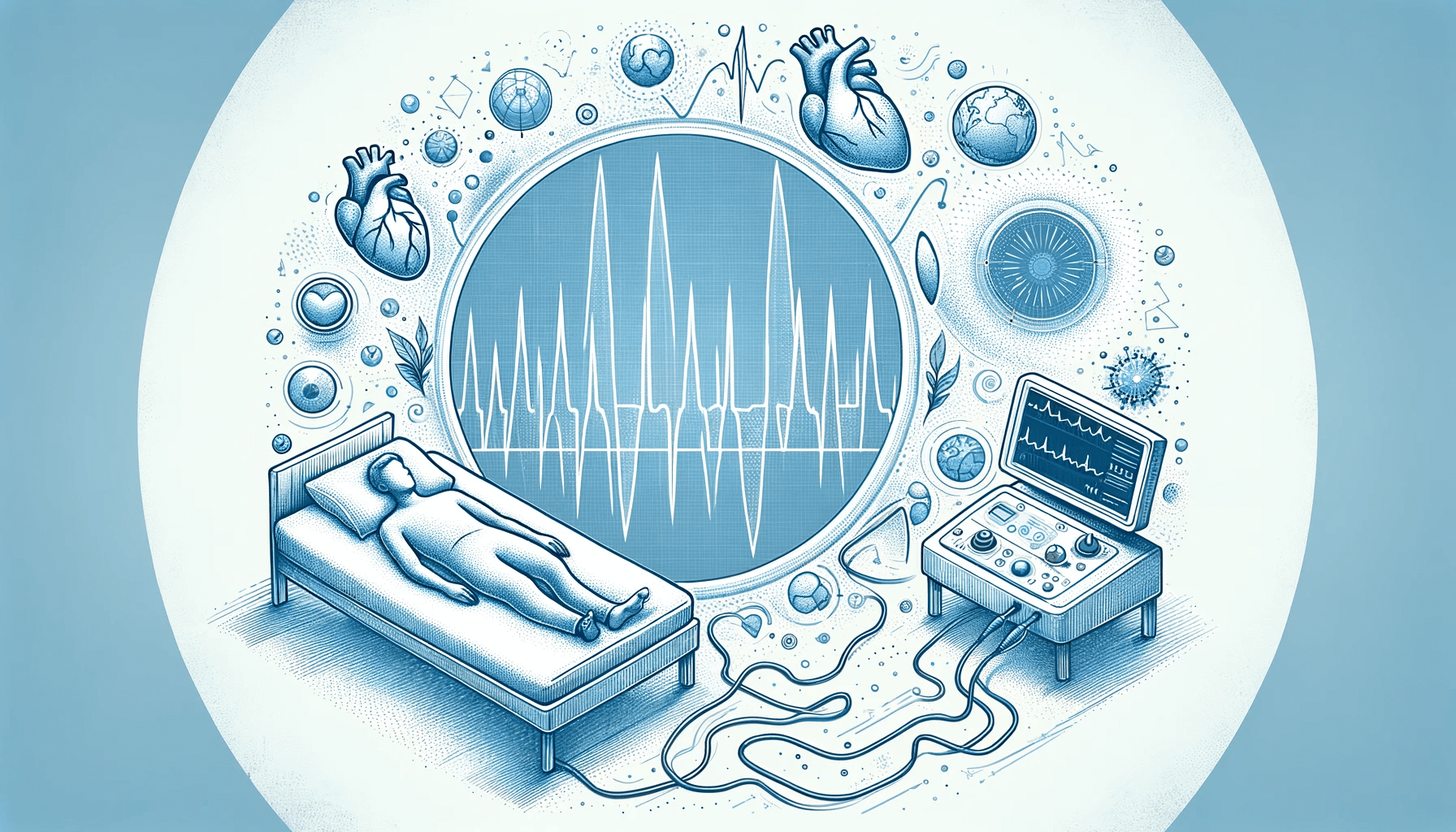
In studying sleep, HRV serves as a bridge between the observable patterns of rest and the underlying physiological processes. It helps in deciphering how different factors – such as stress, lifestyle habits, and medical conditions – influence sleep patterns. This understanding is pivotal in addressing sleep-related issues and enhancing overall health.
For those seeking to grasp the fundamental aspects of HRV and its significance, a deeper exploration can be found in our comprehensive guide, which covers a broad spectrum of HRV-related topics and its relevance in various health domains.
For foundational knowledge on HRV, our Ultimate Guide to Heart Rate Variability offers an in-depth introduction.
Understanding Sleep Through HRV
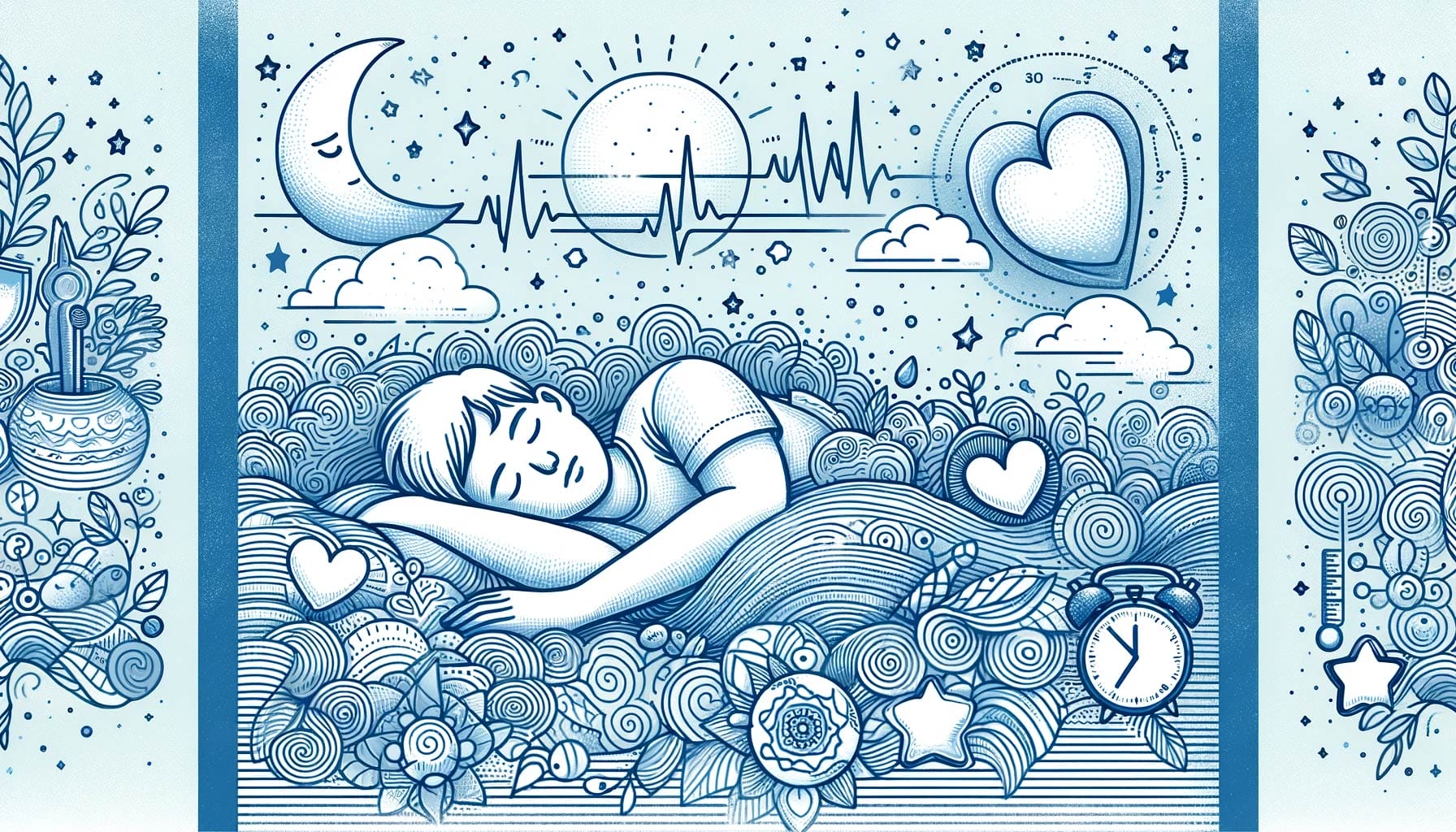
HRV’s effectiveness in monitoring sleep stems from its ability to capture the nuances of the autonomic nervous system’s activity during different sleep stages. Analyzing HRV data collected during sleep sheds light on the quality of rest, revealing how well the body recuperates during different sleep phases.
Various sleep disorders, such as insomnia or sleep apnea, exhibit distinct patterns in HRV. For example, individuals with obstructive sleep apnea often show significant fluctuations in HRV, reflecting the stress placed on the body due to disrupted breathing. By examining these patterns, researchers can gain valuable insights into the nature of sleep disturbances and their physiological impact. Gain deeper insights into the role of heart rate variability in mental health, beyond stress and anxiety, in our article, “HRV and Mental Health: Beyond Stress and Anxiety“.
“HRV transforms our understanding of sleep, turning every heartbeat into a clue about the quality of our rest and recovery.”
Moreover, HRV analysis during sleep aids in evaluating the effectiveness of sleep therapies and interventions. Changes in HRV patterns can indicate improvements in sleep quality, guiding healthcare professionals in optimizing treatment strategies for sleep disorders.
HRV Monitoring: Enhancing Understanding of Sleep Health
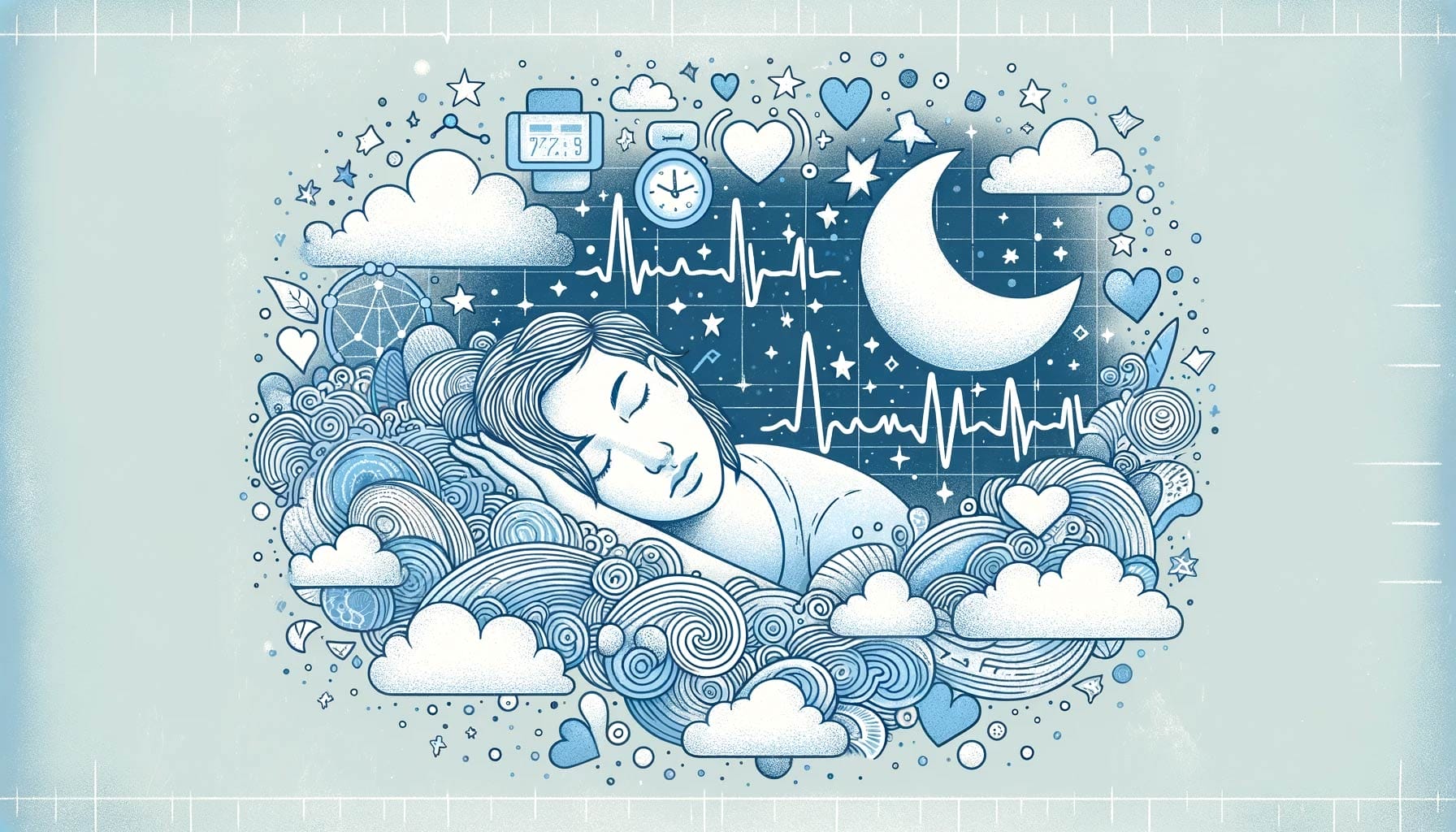
The advent of wearable HRV monitoring technology has opened new doors in sleep research. These devices enable continuous tracking of HRV, providing a detailed picture of how sleep patterns evolve over time and in response to various lifestyle factors.
This ongoing monitoring is particularly valuable in personalized health care. By observing their HRV patterns, individuals can identify lifestyle factors that positively or negatively impact their sleep. This data empowers them to make informed decisions about behaviors and routines that promote better sleep quality.
“Wearable HRV technology brings the science of sleep into our daily lives, offering real-time insights into the art of resting well.”
In clinical settings, wearable HRV monitors are proving invaluable in long-term sleep studies. They offer a non-invasive method for tracking patients’ sleep quality over extended periods, facilitating more comprehensive and accurate assessments than occasional sleep laboratory tests.
The comprehensive impact of stress and the importance of recovery is further explored in HRV in Stress Management and Recovery, which delves into how HRV can guide overall wellness strategies.
The Impact of Sleep Disorders on HRV
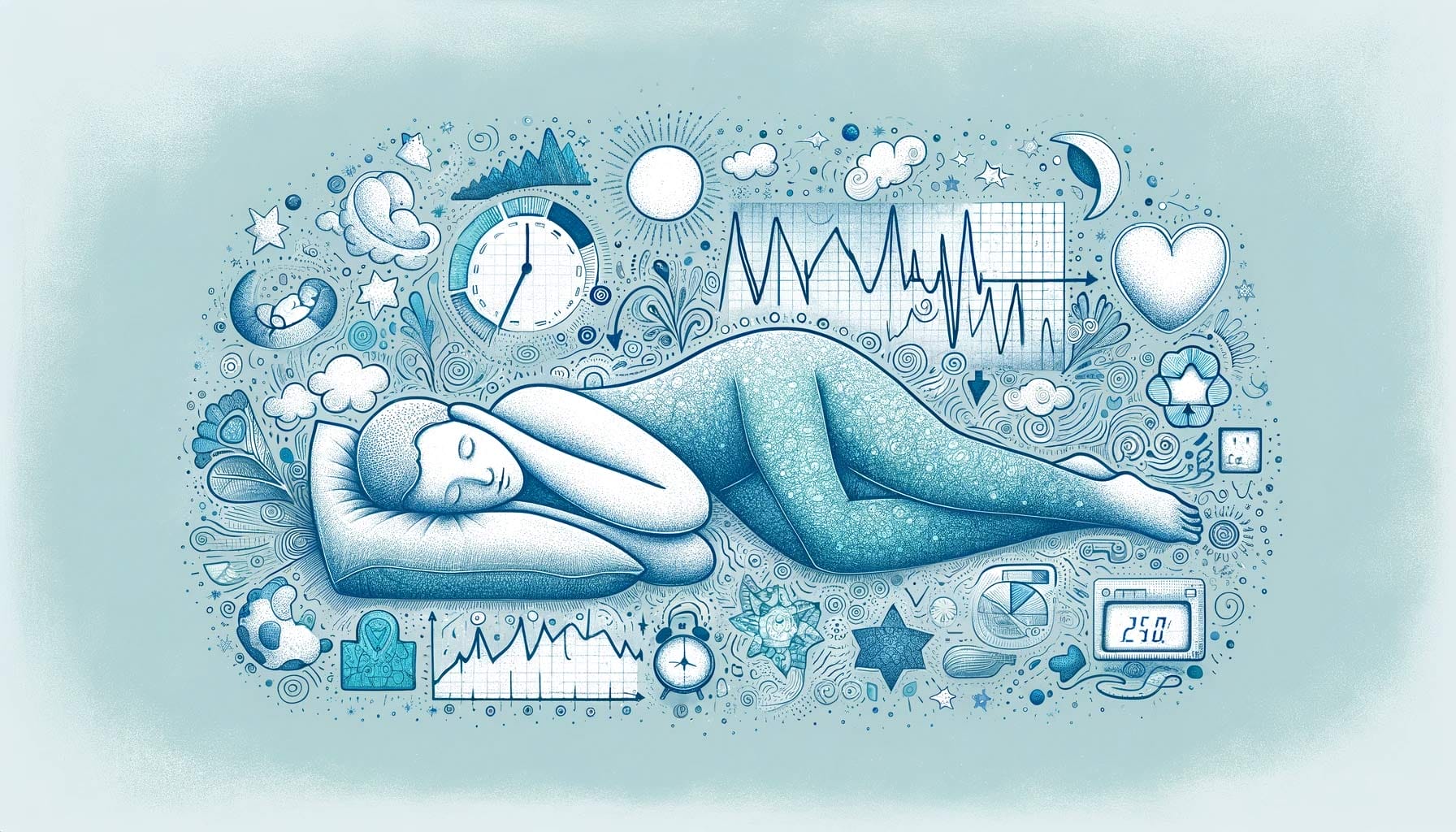
Sleep disorders significantly affect HRV, and understanding these effects is key to effective treatment. Conditions like insomnia, which disrupts the normal sleep-wake cycle, can lead to decreased HRV, indicating stress and insufficient recovery. Similarly, sleep apnea, marked by repeated breathing interruptions, often results in fluctuating HRV, reflecting the strain on the cardiovascular system.
“In the realm of sleep disorders, HRV serves as a crucial indicator, guiding clinicians and patients towards effective solutions.”
HRV analysis provides a quantitative method to assess the severity of sleep disorders and monitor the body’s response to treatment. For instance, improvements in HRV can be an indicator of successful therapy in sleep apnea patients, such as the use of Continuous Positive Airway Pressure (CPAP) machines.
The use of HRV in clinical practice for respiratory diseases is further illustrated in our article on HRV in Respiratory Health and Disease Management, highlighting its growing importance in healthcare.
Nutritional Influences on Sleep and HRV

Diet and nutrition have a profound impact on sleep quality, as evidenced by HRV patterns. Certain foods and nutrients can enhance or disrupt sleep, which is reflected in changes in HRV. For example, a diet high in caffeine and sugar might lead to lower HRV during sleep, indicating less restful sleep, whereas a balanced diet rich in nutrients can promote higher HRV and better sleep quality.
“The path to restful sleep can often be found on our plates, with HRV acting as a guide to the dietary choices that shape our nights.”
This part of the article delves into the specifics of how diet influences sleep and HRV. It discusses the types of foods and dietary patterns that are conducive to good sleep, as well as those that might hinder it, as also previously examined in our article on HRV and Nutrition. Understanding these relationships can be crucial in formulating dietary strategies that support healthy sleep patterns, contributing to overall well-being.
Advancing Sleep Research with HRV

The application of HRV in sleep research is unlocking new understandings and potential treatments for sleep-related issues. Ongoing studies are exploring the use of HRV data to personalize sleep interventions, optimizing sleep for different population groups, from athletes to individuals with chronic health conditions.
Emerging research is examining the long-term implications of sleep quality on health as reflected in HRV. These studies contribute to a growing body of evidence linking sleep quality to a range of health outcomes, from mental health to cardiovascular disease. By leveraging HRV data, researchers are gaining a more holistic view of sleep and its critical role in overall health.
Explore the essential role of heart rate variability in cardiology for heart health in our informative article, “HRV in Cardiology: A Vital Tool for Heart Health“.
“HRV is not just measuring sleep; it’s redefining our approach to achieving restful, health-promoting sleep.”
The Future of HRV in Sleep Studies
The future of HRV in sleep studies is rich with potential, driven by technological innovation and deepening research. Wearable HRV technology is becoming increasingly sophisticated, offering more detailed and accurate data for sleep analysis. This progress promises to enhance our understanding of sleep and its impact on health, potentially leading to more personalized and effective sleep interventions.
Looking ahead, the integration of HRV data with other health metrics could provide a more comprehensive view of an individual’s health. This holistic approach could transform sleep research, leading to breakthroughs in our understanding of sleep disorders and their management.
Conclusion: Enhancing Sleep Quality Through HRV
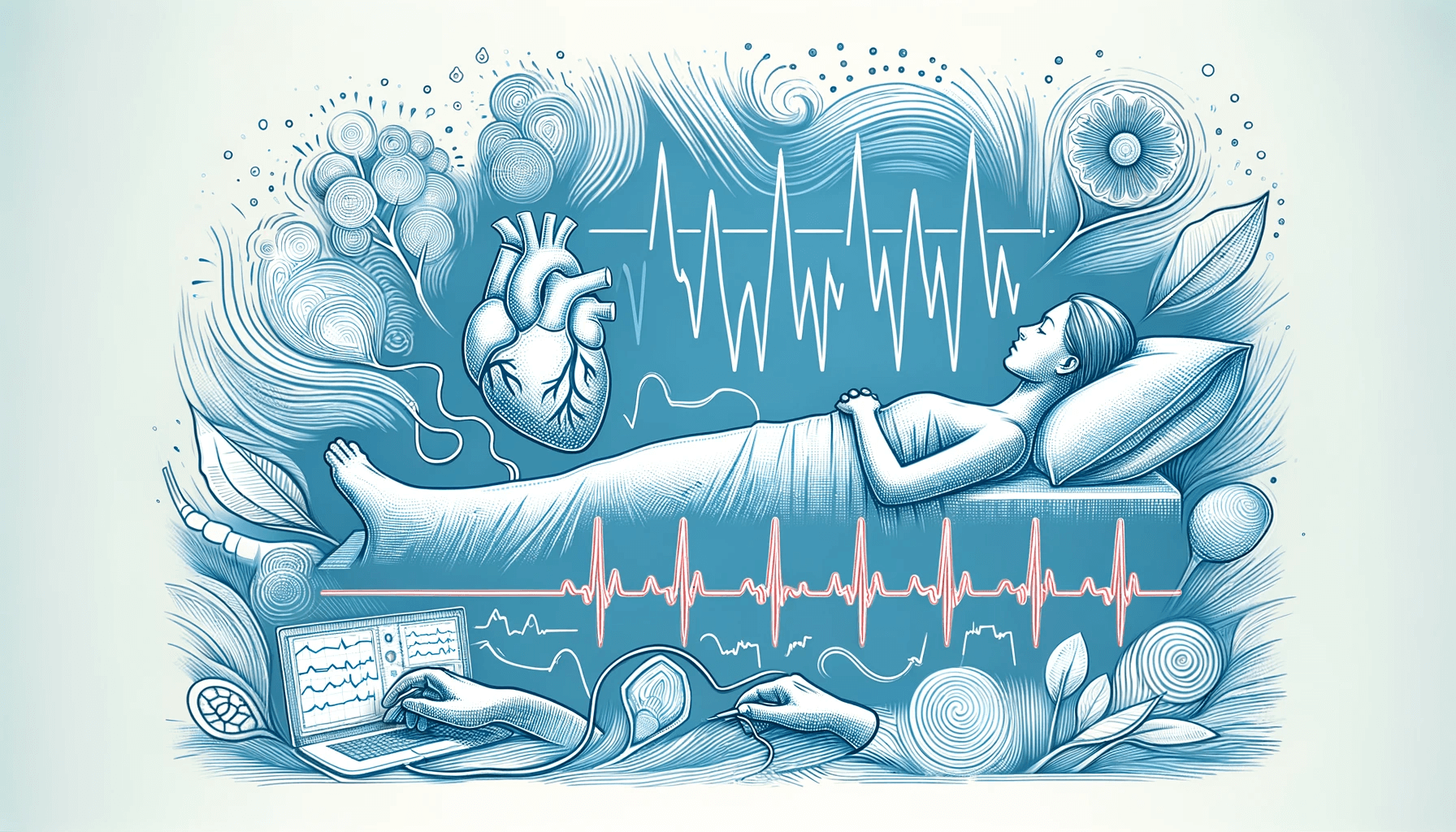
HRV is proving to be a key tool in enhancing our understanding and management of sleep. Its simplicity in measurement, coupled with the depth of information it provides, makes HRV an invaluable asset in both personal health management and clinical research.
By integrating HRV analysis into sleep studies, researchers and clinicians are gaining new insights into how sleep patterns are intricately linked to overall health. This approach is not only helping in the diagnosis and treatment of sleep disorders but is also contributing to broader health initiatives by highlighting the importance of quality sleep.
As we continue to explore the nuances of HRV and its relationship with sleep, we are unlocking new possibilities for improving health and wellness. HRV analysis is more than a technical measurement; it is becoming a fundamental aspect of understanding and optimizing one of the most crucial components of health: restful sleep.
You Might Also Be Interested
- 📚 Delve into our comprehensive HRV Article Collection for insightful perspectives on Heart Rate Variability (HRV).
- 🔍 Learn how the advanced features of Fibion Emfit & Fibion Vital can aid you in your HRV research.
- 📅 Planning an HRV measurement and analysis? For a chat with our HRV expert, book a session with Dr. Miriam Cabrita.
Frequently Asked Questions About This Topic:
How does HRV provide insights into sleep quality? +
HRV, reflecting autonomic nervous system activity, offers insights into sleep quality by measuring variations in time intervals between heartbeats. High HRV during sleep generally indicates effective rest and recovery, while lower HRV may point to disturbed sleep.
What role does HRV play in detecting and monitoring sleep disorders? +
HRV can detect irregularities in heart rhythm associated with sleep disorders. For example, fluctuations in HRV can indicate stress due to disrupted breathing in sleep apnea, aiding in diagnosis and monitoring treatment efficacy.
How has wearable HRV monitoring technology impacted sleep research? +
Wearable HRV monitoring technology allows for continuous tracking of HRV, providing detailed data on sleep patterns over time. This enables personalized health care and helps in long-term monitoring in clinical settings.
What is the impact of sleep disorders on HRV? +
Sleep disorders like insomnia and sleep apnea significantly affect HRV, often leading to decreased variability, which indicates stress and insufficient recovery. HRV analysis helps assess these effects and monitor treatment response.
How does nutrition influence sleep and HRV? +
Diet and nutrition impact sleep quality, as reflected in HRV patterns. Foods and nutrients that promote or disrupt sleep affect HRV, guiding dietary choices for better sleep quality and overall well-being.
What future developments are expected in HRV and sleep research? +
Advancements in wearable HRV technology and research are expected to enhance understanding of sleep patterns and their health implications. Future trends include integrating HRV data with other health metrics for comprehensive sleep studies.

